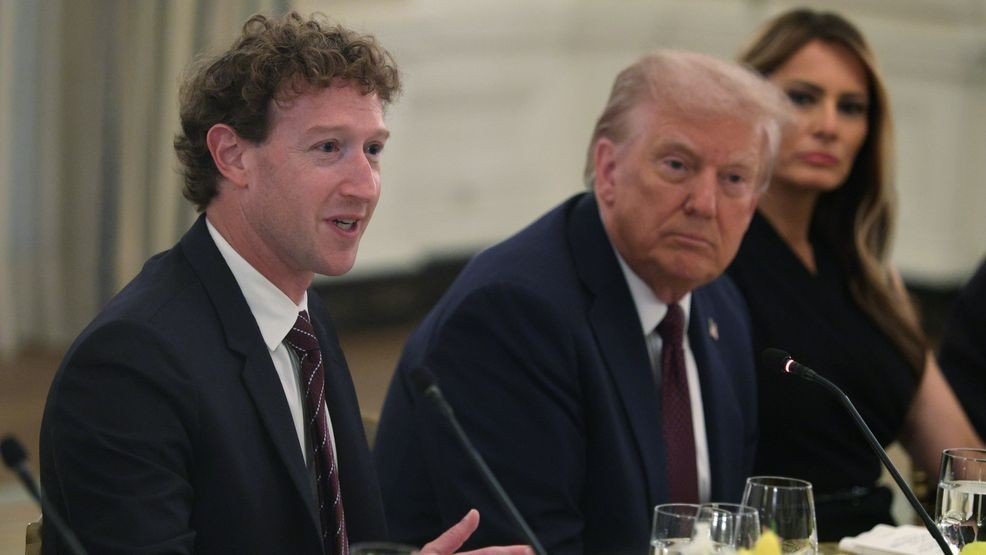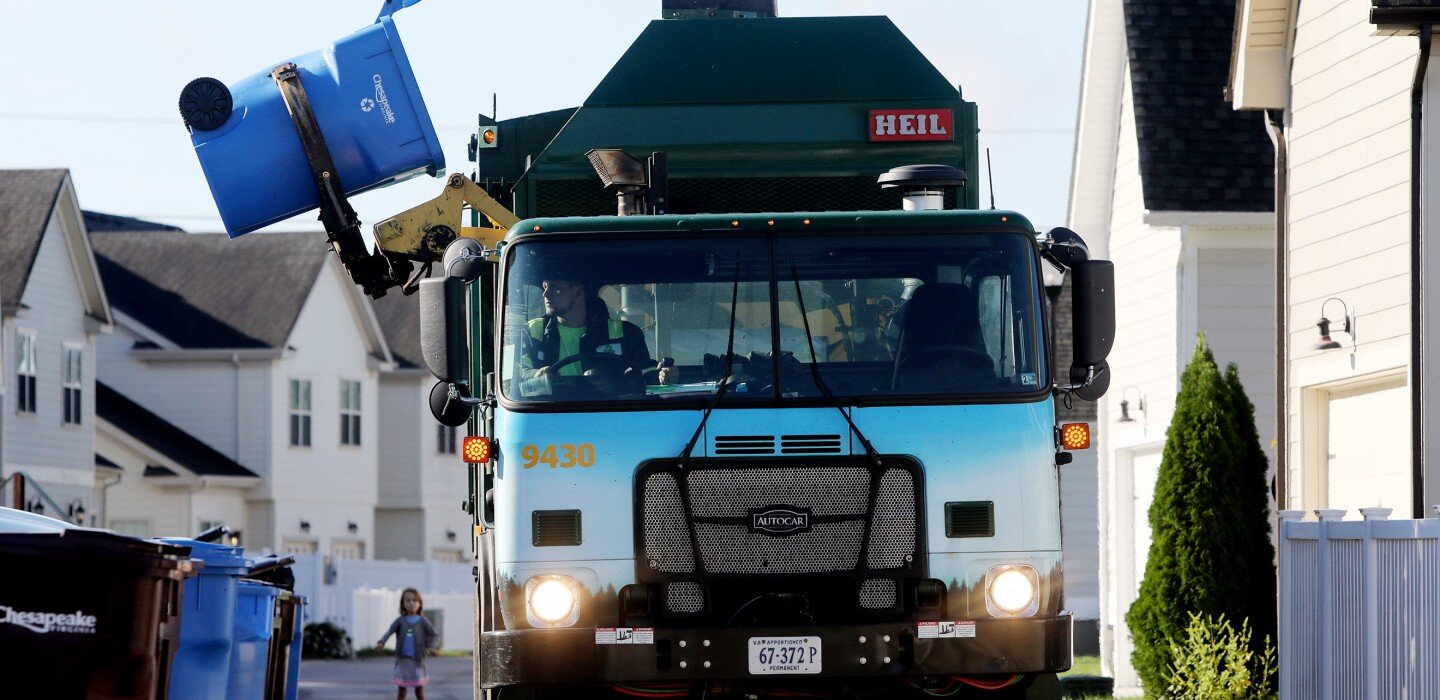AI Research
Bublik reacts on social media after losing to Sinner: “It’s Artificial Intelligence”
🎾 Atharva Sharma vs Alexander Klintcharov
- Sign up with Bet365 here
- Make your first deposit of at least €5
- Go to the “Live” section and watch every match
Watch the match on Bet365
A few minutes after losing to Jannik Sinner at the US Open 2025 with a convincing score against him, Alexander Bublik reacted on social media to the incredible performance of the world number one. The Kazakh player commented on a picture with the result: “AI,” once again referring to the Italian as Artificial Intelligence, always as a compliment to his amazing level on the court.
And post-match he was very quick to insist on his point. https://t.co/qjuPPcHxif pic.twitter.com/7B1rhCUWUH
— José Morgado (@josemorgado) September 2, 2025
This news is an automatic translation. You can read the original news, Bublik reacciona en redes sociales tras perder contra Sinner: “Es Inteligencia Artificial”
AI Research
The race to power artificial intelligence

WASHINGTON (TNND) — The United States is experiencing a significant increase in electricity demand due to the rapid growth of artificial intelligence technologies. According to an analysis from Berkeley Lab, data centers currently consume about 4.4% of all U.S. electricity, a figure expected to rise sharply as AI models require more power. By 2028, over half of this consumption could be attributed to AI alone, equivalent to powering 22% of all U.S. households.
Most of this electricity is generated from fossil fuels, with data centers operating on grids that emit 48% more carbon than the national average, said a report from MIT Technology Review. While companies like Meta and Microsoft are investing in nuclear power, natural gas remains the primary energy source.
In response to the growing demand, President Donald Trump signed an executive order in April directing the Department of Energy to expedite emergency approvals for power plants to operate at full capacity during peak demand. The order also mandates the development of a uniform methodology to assess reserve margins and identify critical power plants essential for grid reliability.
Despite these measures, concerns remain about the U.S.’s ability to provide the 24/7 power required by AI, especially as China implements plans to ensure reliable electricity for data centers. According to reporting from Forbes, “the U.S. does not have a coherent and continuing energy plan of any type. China’s central planning allows for development and sustainability, while the U.S. approach to energy changes every four years”.
AI Research
House bill targets rising rural utility costs from AI data centers

Surging utility bills linked to artificial intelligence data centers would get a closer look from a trio of federal agencies under a new bipartisan bill in the House.
The Unleashing Low-Cost Rural AI Act from Reps. Jim Costa, D-Calif., and Blake Moore, R-Utah, would require the Energy, Interior and Agriculture departments to examine the effect AI data center buildouts are having on rural America.
“AI Data Centers are expanding rapidly and using more energy and water than entire cities. That energy demand is driving up utility costs for consumers,” Costa said in a press release Thursday. “My legislation ensures we take a hard look at how this growth impacts rural communities that are powering the AI industry, and make sure families aren’t left paying the price.
“But at the same time,” he continued, “it’s important that rural communities are not left behind in the new opportunities that AI data centers will provide for agricultural sciences and an improved ability to compete in this modern era.”
The rapid construction of AI data centers across the country — especially in rural areas — has led to a spike in energy demand that has dramatically driven up utility costs for consumers. The lawmakers’ press release cited a stat from PJM — the world’s largest energy market, spanning 13 states — that said data centers have led to an additional $9.3 billion in costs for ratepayers.
The AI Action Plan released by President Donald Trump in July featured several callouts to the importance of expanded energy capacity through streamlined permitting and fewer environmental regulations. The plan also sought to make federal lands “available for data center construction and the construction of power generation infrastructure for those data centers.”
Moore said in the press release that Utah is “a prime location” for AI infrastructure and data centers, but “cementing” the state’s innovation bona fides “will require identifying rural areas ready for data expansion, streamlining permitting for new energy projects, and promoting the co-location of data centers with energy facilities.”
“These efforts will power our growing digital demands without passing costs on to families,” he added. “I’m grateful to partner with Representative Costa to introduce the Unleashing Low-Cost Rural AI Act to identify other areas of the country, like Utah, that will advance solutions to meet our energy needs.”
Under the bill, the Energy, Interior and Agriculture would team up to study the impact of AI data center expansions in rural parts of the country, in addition to identifying areas that appear to be strong candidates for tech expansion. They would also assess the impact data center expansion might have on consumer costs, as well as energy supply and reliability.
The agencies would also be charged with examining ways current energy infrastructure may be upgraded to allow AI data centers to coexist alongside those power facilities. There will also be reviews of nuclear and geothermal energy, solar, wind and hydro power, battery storage, and carbon capture.
According to a piece published last month in the Tech Policy Press, global energy use by data centers has jumped 12% annually over the past seven years, with projections that it will more than double by 2030.
“As providers of the largest and most compute-intensive AI models keep adding them into more and more aspects of our digital lives with little regard for efficiency (and without giving users much of a choice), they grow increasingly dependent on a growing share of the existing energy and natural resources, leading to rising costs for everyone else,” the authors warned.
AI Research
AI, Robotics Could Sort Trash in South Hampton Roads, Va.

(TNS) — Representatives of the region’s waste disposal authority are making the rounds at city meetings this month to lay the groundwork for long-term contract extensions they say will extend use of the regional landfill through the end of the century.
Southeastern Public Service Authority (SPSA) is asking South Hampton Roads cities and counties to renew their trash contracts for 25 years instead of an upcoming 10-year extension.
The longer-term contracts are needed to ensure that SPSA’s third-party provider will invest $200 million in new facilities to sort recyclables from solid waste across the region, SPSA Board of Directors Chairman Tom Leahy told the Virginia Beach City Council Tuesday.
The new sorting process will eventually eliminate the need for blue curbside recycling cans and for residents to sort recyclables from solid waste.
“All the waste would go into a single can, collected by a single truck at the curbside,” said Leahy. “Recycling and reuse would occur after collection.”
SPSA handles hundreds of thousands of tons of waste for Chesapeake, Norfolk, Portsmouth, Suffolk and Virginia Beach, in addition to surrounding localities including Franklin and Southampton and Isle of Wight counties.
SPSA has been in need of alternative waste disposal services since the 2024 closure of the WIN Waste plant, formerly known as the Wheelabrator facility, which burned 80% of the region’s trash for decades. The former plant also converted waste into steam energy for the Norfolk Naval Shipyard. Then, 30% of the ash left over was diverted to the landfill.
The plant’s closure put pressure on the regional landfill, which will reach capacity in a few decades.
SPSA is in the process of finalizing negotiations with Commonwealth Sortation LLC, a subsidiary of AMP Robotics — a Colorado-based alternative waste disposal provider that uses artificial intelligence and robotics to extract mixed recyclables and organic material from municipal solid waste.
The process will divert 50% of SPSA’s waste from the landfill and extend the landfill’s capacity through 2095, Leahy said.
Commonwealth Sortation plans to invest approximately $200 million in new processing facilities, but wants a guarantee that SPSA’s member communities are in for the long haul. The company is currently operating out of a facility in Portsmouth and plans to expand its operations.
An agreement between SPSA’s board and Commonwealth Sortation is expected by the end of this year, but it’s contingent on most of the localities agreeing to the 25-year extension, Leahy said.
The Virginia Beach City Council is scheduled to vote on the contract extension Oct. 7. Cities’ agreements with SPSA are scheduled to renew for an additional 10 years in 2027. The proposed amendment would extend each localities’ contract to June 30, 2052.
“Recycling’s pretty popular with our citizens, and this will make everybody with a black can be a recycler,” said Vice Mayor Rosemary Wilson. “It’s really good news environmentally for all of us.”
Tipping fee increases associated with the new process are not expected to be higher than what large cities like Virginia Beach that offer curbside recycling are already incurring.
“We won’t necessarily see a cost increase associated with this transaction,” said City Manager Patrick Duhaney.
Several cities recently incurred cost increases when they renewed recycling contracts with TFC Recycling, including Virginia Beach and Norfolk. Chesapeake did away with curbside recycling in 2022 as costs increased.
The average number of homes using curbside recycling in Virginia Beach was 125,000 in 2024. Virginia Beach residents currently pay for curbside recycling as part of their trash collection. The solid waste collection fee is $30.55 per month.
Virginia Beach’s contract with TFC Recycling will overlap with the new SPSA contract and general fund support may be needed to cover the cost, City Manager Patrick Duhaney said.
©2025 The Virginian-Pilot. Visit pilotonline.com. Distributed by Tribune Content Agency, LLC.
-

 Business2 weeks ago
Business2 weeks agoThe Guardian view on Trump and the Fed: independence is no substitute for accountability | Editorial
-
Tools & Platforms1 month ago
Building Trust in Military AI Starts with Opening the Black Box – War on the Rocks
-

 Ethics & Policy2 months ago
Ethics & Policy2 months agoSDAIA Supports Saudi Arabia’s Leadership in Shaping Global AI Ethics, Policy, and Research – وكالة الأنباء السعودية
-

 Events & Conferences4 months ago
Events & Conferences4 months agoJourney to 1000 models: Scaling Instagram’s recommendation system
-

 Jobs & Careers2 months ago
Jobs & Careers2 months agoMumbai-based Perplexity Alternative Has 60k+ Users Without Funding
-

 Podcasts & Talks2 months ago
Podcasts & Talks2 months agoHappy 4th of July! 🎆 Made with Veo 3 in Gemini
-

 Education2 months ago
Education2 months agoVEX Robotics launches AI-powered classroom robotics system
-

 Education2 months ago
Education2 months agoMacron says UK and France have duty to tackle illegal migration ‘with humanity, solidarity and firmness’ – UK politics live | Politics
-

 Funding & Business2 months ago
Funding & Business2 months agoKayak and Expedia race to build AI travel agents that turn social posts into itineraries
-

 Podcasts & Talks2 months ago
Podcasts & Talks2 months agoOpenAI 🤝 @teamganassi


